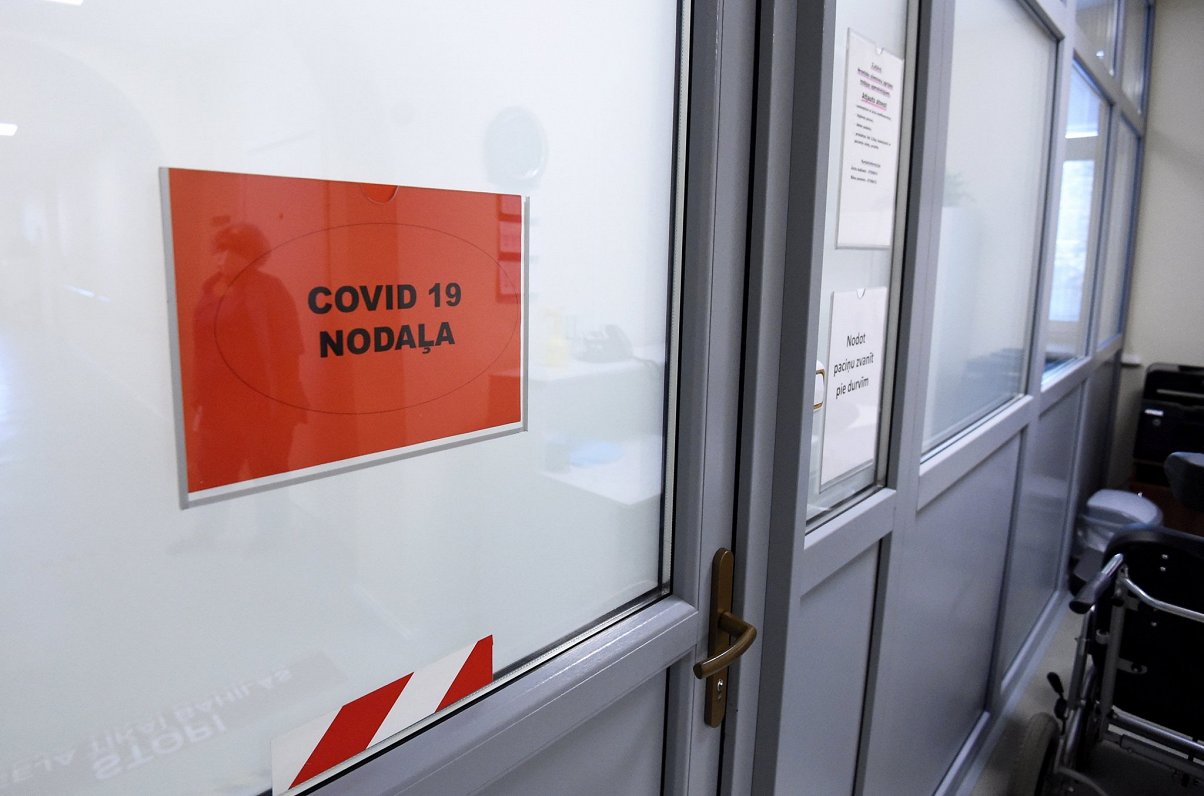IN SHORT:
- The number of Covid-19-infected people has increased by a third in a week.
- Hospitals still have fragile stability; concerns about the growth of patients.
- The number of imported Covid-19 cases is increasing.
- 640 cases of omicron variant of Covid-19 have been identified in Latvia.
- The amount of vaccination during the holidays was lower than usual.
The number of Covid-19-infected people has increased by a third during the week; “fragile stability” in hospitals
00:00 / 03:11
Kristaps Feldmanis / Latvian Radio
–
–
–
The number of Covid-19 infections has tripled
Last week, from December 27 to January 2, the number of newly detected cases of Covid-19 increased by 30.2%, the Center for Disease Prevention and Control (SPKC) reported. Epidemiologists added that this happened even in a situation where the number of Covid-19 tests decreased by 1.9%.
Last week, an average of 6,633 tests were performed per day (previously 6,760), while an average of 799 new cases were detected per day (previously 613).
The reproductive rate (R) for Covid-19 infection has risen to 1.13 in the past week (0.83 a week earlier), indicating a faster spread of the infection in the community.
SPKC admitted – it could be due to the Christmas holidays.
“Data for the last week show that there is an increase in Latvia – 30.2%. Although we see a small reduction in the number of tests, we do see an increase in these cases. However, it shows that people are getting sick more.
Most likely, in those cases of the disease that were discovered last week, the infection took place around Christmas time, ”said Ilze Arāja, a representative of the SPKC.
–
Comparing the prevalence of the infection per 100,000 population among vaccinated and unvaccinated / partially vaccinated people last week, Covid-19 infection was 1.6 times more common in unvaccinated and partially vaccinated people in Latvia than in fully vaccinated people.
The SPCC recalled that as the number of vaccinees increases and the prevalence of Covid-19 infection continues to predominate among non-vaccinated individuals, the overall incidence of infection in vaccinated individuals will increase. However, among vaccinated people, the disease is more likely to occur in a milder form and with less need for hospitalization, so the proportion of vaccinated and infected people should always be seen in the context of the overall number of cases of Covid-19 prevented in the general population.
Fragile stability in hospitals
In hospitals, meanwhile, the picture of Covid-19 is still relatively calm: the number of patients is not rising, but is also falling. In the previous week, an average of 47 patients a day were hospitalized with Covid-19. There are also still a large number of patients with severe disease.
“Nothing is clearly changing, and so far no positive or negative trends can be observed.
For us, the principle is that the number of infected patients present and treated ranges from 70 to 80 patients. We do not observe any mass entry or discharge of fatalities. Everything happens to us as planned. At the moment we have 78 patients in the hospital, ”said Grigorijs Semjonovs, the head of Daugavpils Hospital.
Janita Veinberga, a representative of Pauls Stradins Clinical University Hospital, calls the situation fragile: “We have closed last year with 35 Covid-19 patients in the hospital. But to date, they are 49 patients. The number of patients remains fairly even. Five have arrived last day. “
The number of imported Covid-19 cases is increasing; the omicron variant is spreading
The average for the European Union and the European Economic Area increased to 818.9 during the week (a week earlier – 756.2). The 14-day cumulative rate of Covid-19 morbidity per 100 thousand inhabitants in Latvia is currently 497.3 (514.2 a week ago). In Estonia, the indicator has increased and reached 640.2 last week (543.1 a week earlier). Lithuania’s indicator has dropped to 737.2 (a week ago – 821.8).
The number of cases imported rose sharply last week (358), reaching 6.4% of all Covid-19 infections. During the 50th to the 52nd week, the people most often infected with Covid-19 in Latvia came from Great Britain (120), Italy (79), Sweden (56), Germany (49), Spain (46), Finland (45), Denmark (39), Norway (32), Egypt (31), France (30), USA (28), UAE (26), Lithuania (26), Estonia (19), Hungary (17).
Until last week, more than 640 cases of Covid-19 virus omicron were detected in Latvia:
- 46% are imported cases (most cases were imported from Great Britain – 56, Italy – 19, USA – 18, Spain – 18, Denmark – 16, France – 15, UAE – 14, Sweden – 14, Canada – 13, Finland – 5) , of which 69% openly tested arrivals at the airport.
- 54% are secondary cases (infected contacts) or local cases (with an unknown source of infection and infection conditions).
Vaccination was sluggish
During the Christmas and New Year holidays, people get vaccinated quite sluggishly. Zaiga Barvida, a spokeswoman for the National Health Service’s Vaccination Project Division, explained that data on annual holidays may change slightly, but it is already known that at least 2,226 people received pots from 31 December to 2 January. However, the vast majority of them – more than 2,000 – were on January 2nd. Even fewer vaccines were given during the Christmas holidays.
“There were vaccinations against Covid-19 in only a few places during the Christmas holidays, and there were 1,152 vaccinations over the three Christmas holidays. There are just over 39,000 vaccinations between Christmas and the New Year, from 17 to 30 December. “It’s a little less, if we talk about the week before Christmas, there were about 45,000 vaccinations in those four working days,” said Barvida.
CONTEXT:
In the fall of Covid-19 morbidity Reaching the highest mark in Latvia, for more weeks introduced the so-called “arcade” and housekeeping. At the end of the “arcade”, but on 15 November Citizens are free to shop, assemble and receive services in the “green mode”, ie by presenting a Covid-19 vaccination or disease certificate. But people without a certificate or in “red mode” have access to a minimum of services.
The incidence of Covid-19 has been declining for several weeks as vaccination coverage has increased. However in mid-December there is again a gradual increase in the number of new Covid-19 infections; in addition, the number of inpatients is increasing.
Meanwhile, the rapid spread of the omicron variant of the Covid-19 virus in other countries raises concerns about a significant possible outbreak in Latvia as well. Forecast models showthat, in the worst case scenario, up to about 6,500 patients could be treated in hospitals at the same time in February.
–


